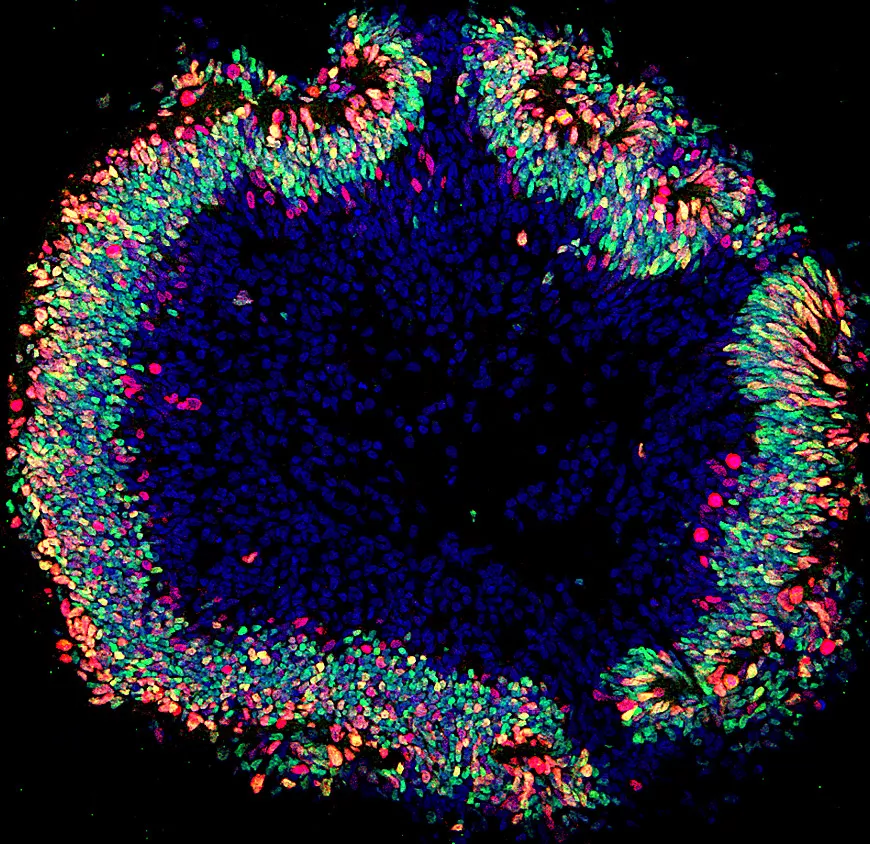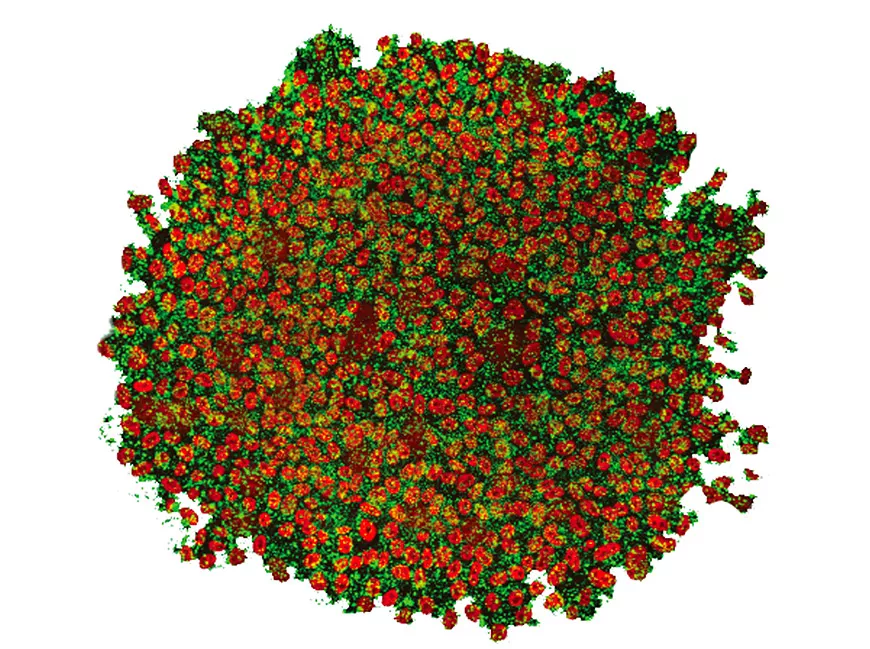Retinitis pigmentosa
Pigmentary retinopathy is a progressive genetic degeneration of the photoreceptor cells in the retina. Pigmentary retinopathy mainly begins by affecting the periphery (destruction of the rods), and later the centre of the retina (dysfunction of the cones). Some severe forms can lead to blindness.
Disease simulation

Definition and symptoms
Who is affected?
Retinitis pigmentosa affects both men and women with varying ages of onset from childhood to adulthood. Retinitis pigmentosa affects about 30,000 people in France.
How does it affect patient?
The person with retinitis pigmentosa suffers from a loss of night vision or low light vision and a progressive narrowing of the peripheral visual field, "tunnel vision" at a later stage.
They are sensitive to light (photophobia) and maintain good vision of details for a long time, then they may experience a possible decrease in visual acuity (blurred vision) despite appropriate optical correction.
Treatments for retinitis pigmentosa
There is no preventive or curative treatment to date. Gene therapy trials are underway. For very advanced stages, a retinal prosthesis may be considered.
Possible difficulties faced by people with retinitis pigmentosa
The person with retinitis pigmentosa will have difficulty avoiding obstacles in the street: poles on the sidewalks, a hole in the road, a stroller, a passer-by, etc. and to locate information on the street (a street sign, a building number, etc.), in front of a computer station (information on an unknown website, in a spreadsheet, etc.) and in one's daily life (a business file on a shelf, a supermarket product, etc.)
They may also have difficulty moving around with light transitions (building nettle, entrance to a restaurant, transition from corridors to an office, etc.) and in a subdued atmosphere, seeing an interlocutor, moving around (restaurant, meeting room with projection).
Research by the Institut de la Vision
Can an organoid help repair the retina?

An organoid is a 3D structure, grown in vitro, that will reproduce the architecture of an organ and, if possible, some of its functions, from human cells. We're talking about an organ avatar, an avatar of the retina. In addition to helping to decipher diseases, organoids offer encouraging prospects in:
Cell therapy: the objective is to use organoids as a source of healthy photoreceptors (not carriers of a mutation) to then transplant them into the patient's retina.
Gene therapy: we have recently shown that we can prevent photoreceptor death in cases of retinitis pigmentosa. The drug gene was introduced into the diseased organoid by a viral vector. This is a very good step forward that opens up the prospect of clinical trials and the development of a treatment.
At the Institut de la Vision, we have patented our technique for transforming pluripotent* stem cells present in the skin into a retinal organoid that contains all the cell types of the retina (photoreceptors: cones and rods; ganglion cells, glial cells, pigment epithelium cells, etc.). We have trained a number of researchers in our technique, and it is benefiting other centres around the world.

*Pluripotent stem cells: cells that have the ability to give rise to all cell types.
